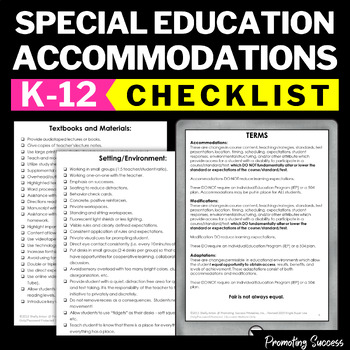Whether you’re a general education teacher, a special education specialist, or a parent, these 10 research-backed autism teaching strategies can make a big difference in your day-to-day routine.
1. Use Visual Schedules to Reduce Anxiety
Visual schedules are one of the most effective strategies for students with autism. They create predictability, reduce anxiety, and support smoother transitions. Even for students who can read, pictures often work best.Keep visual schedules in the same location and refer to them often. Cue students with simple prompts like “check your schedule” during transitions. These can be used at school and at home to build independence and reduce meltdowns caused by unexpected changes.
Try: A pocket chart or magnetic schedule board with icons for each activity.
2. Create a Calming, Predictable Environment
Students on the autism spectrum are often sensitive to sensory input. Minimize clutter and visual distractions. Assign clear places for materials and personal belongings—such as labeled bins and consistent turn-in stations.Think about lighting and sound, too. Fluorescent lights, echoing chairs, or humming projectors may be overwhelming. Consider soft lighting or light filters and experiment with noise-canceling headphones to reduce sensory overload.
3. Visually Structure the Environment
Help students understand expectations by making the classroom layout clear. Use color-coded folders, labeled workstations, and tape to define spaces.At home, create visual structure by:
- Labeling drawers and shelves
- Using picture charts for routines
- Assigning specific spaces for favorite toys or backpacks
4. Support Nonverbal Communication
Many children with autism have limited verbal communication. Alternative communication tools can empower them to express needs and reduce frustration.Options include:
- PECS (Picture Exchange Communication System)
- Voice-output devices
- Communication apps on tablets
Ensure all staff and caregivers are trained, and always have a backup method (such as laminated cards) in case of device failure.
5. Directly Teach Social Skills
Students with autism don’t typically “pick up” social behavior by osmosis. Social skills must be explicitly taught and practiced.Use tools like:
- Social stories to model behavior
- Social scripts to rehearse common interactions (e.g., greetings)
- Picture cards for role-playing and discussion
6. Prioritize Literacy Instruction
Strong literacy skills open up a world of communication. Even students who rely on devices or picture systems benefit greatly from reading and writing instruction.Teach literacy early and consistently, focusing on practical reading and writing skills that support both academic and everyday communication.
7. Provide Sensory Supports
Sensory needs vary from child to child. Some students benefit from deep pressure, while others need frequent movement breaks or tactile input.Start with a sensory profile completed by an occupational therapist. Then, incorporate a sensory “diet” into the school day using tools like:
- Weighted vests or lap pads
- Fidget tools and sensory bins
- Chewable necklaces or hand grippers
8. Maintain Consistency and Routine
Consistency builds trust and helps reduce anxiety. Use consistent language, rules, routines, and expectations across all adults working with the student.Try to keep transitions and schedules as steady as possible, and communicate any changes in advance using visuals or stories.
9. Leverage Student Interests and Strengths
Students with autism often have strong interests or “special topics.” Tap into these for engagement and learning.For example, if a student loves trains, incorporate them into reading materials, writing prompts, and math problems. You’ll see better focus and participation when lessons connect to what students love.
10. Emphasize Functional Skills
Many students with autism can lead fulfilling, independent lives when taught functional skills early.Integrate life skills such as:
- Reading signs and menus
- Handling money and time
- Following multi-step directions
- Practicing hygiene and safety routines
For older students, include community-based learning and job training whenever possible.
Final Thoughts
There’s no one-size-fits-all approach to autism, but these 10 strategies are grounded in best practices and real-world success. Start small, stay consistent, and celebrate each step of progress.
Click HERE to follow us on Instagram.
Click HERE to follow us on Pinterest.
Shelly Anton is a participant in the Amazon Services LLC Associates Program, an affiliate advertising program designed to provide a means for sites to earn advertising fees by advertising and linking to Amazon.com. ** This means there are Amazon affiliate links in these blog posts. This does not mean you pay a dime more when you purchase a product through the link. It just means I am trying to save you valuable teacher time by making it easier for you to find great resources for your students, and I earn a few cents for my research and time. Thank you for all you do for kids!

.png)















Your posting is very useful to us in needs! Thanks for sharing your knowledge. Can I translate your work in Korean? I really want to share this with parents in need. I'll state your original link in my blog, and leave mine here.
ReplyDelete